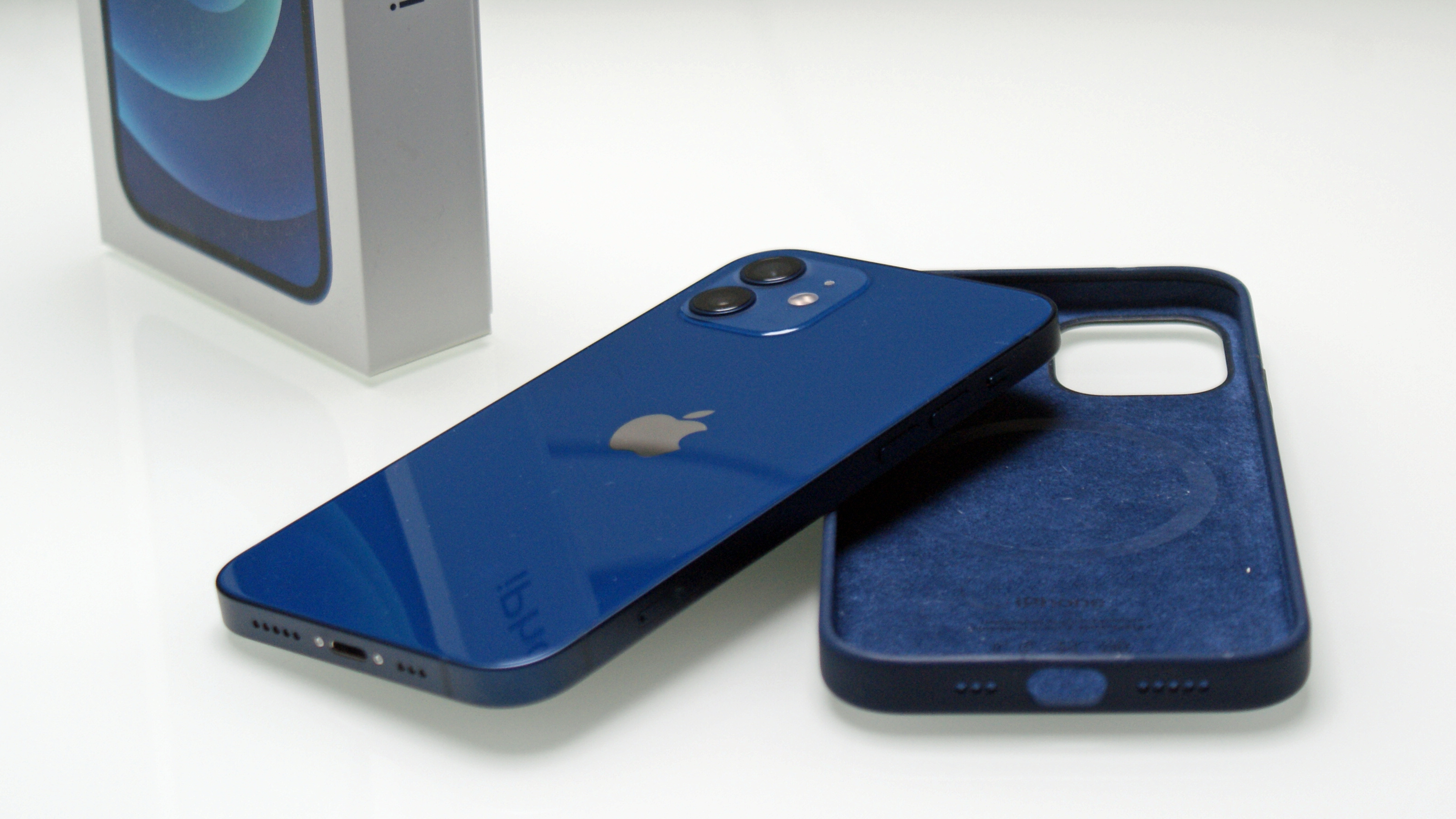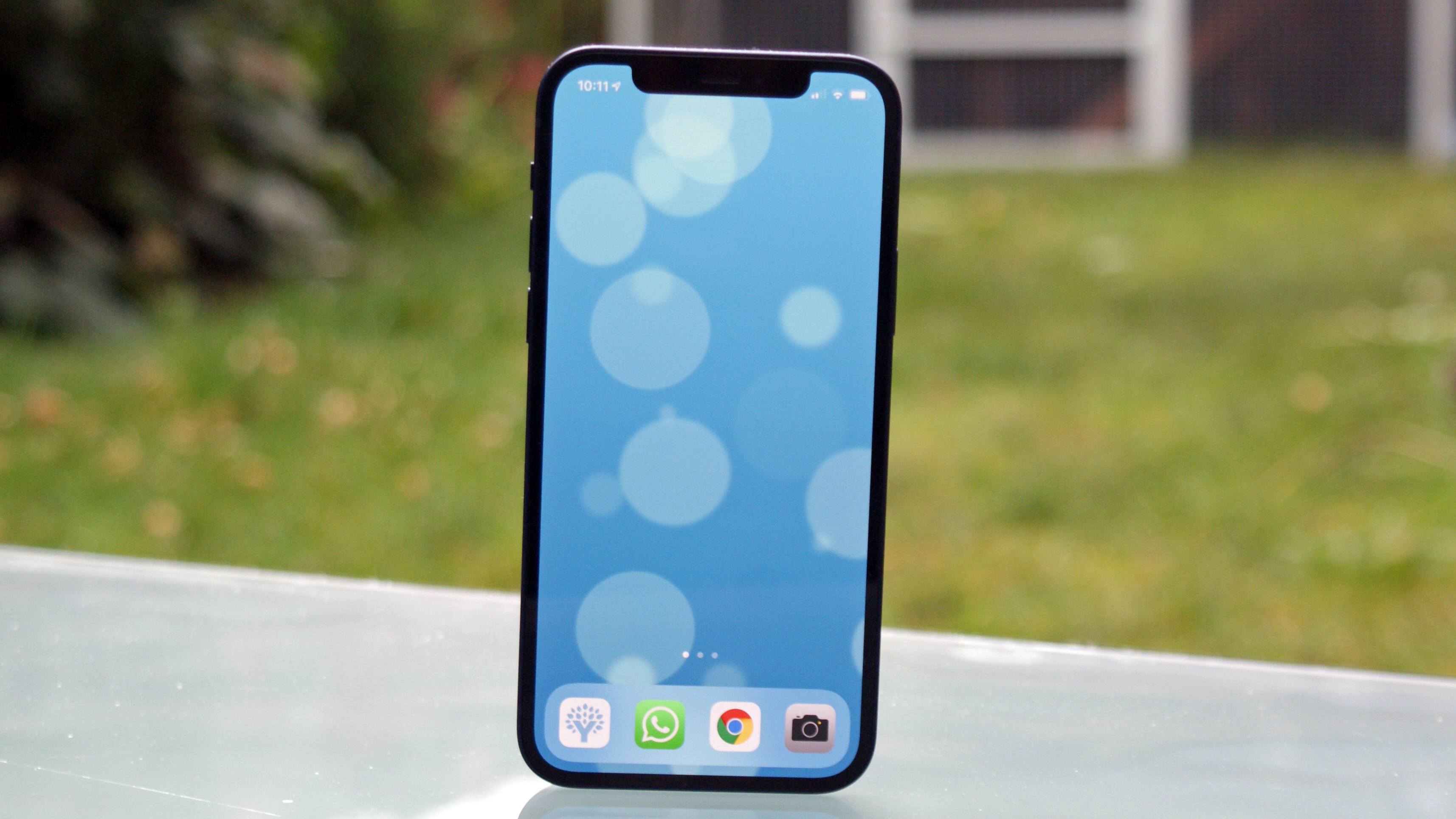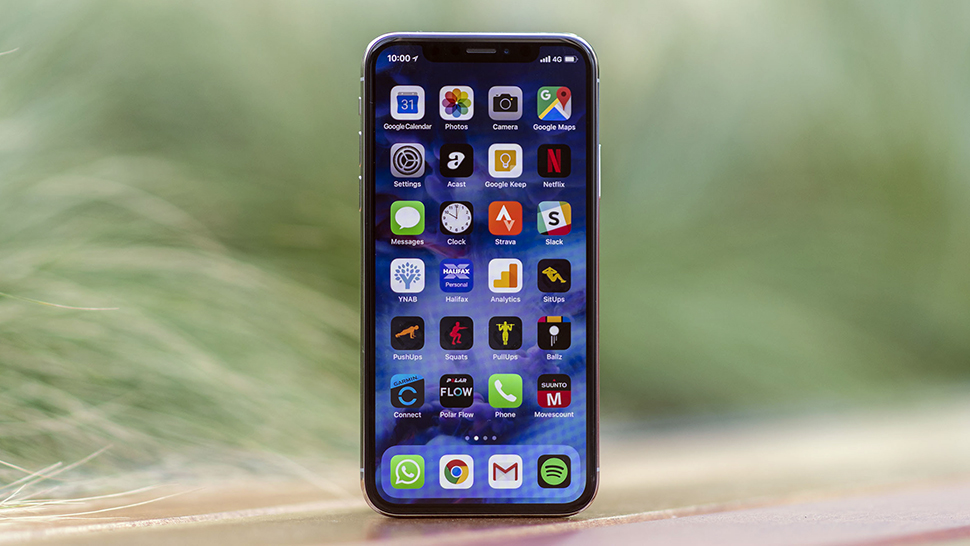
Whether or not you've read our iPhone 12 review and our iPhone X review you might not think these two phones bear much comparison. They’re separated by three years, which is an age in smartphone terms.
But given the lengthening of the smartphone upgrade cycle, there are going to be a lot of iPhone X owners out there looking to upgrade over the coming months. And while the iPhone 12 Pro or iPhone 13 Pro would appear to be the natural replacement, we think there’s a strong case to be made for the iPhone 12.
After all, this phone still ranks among the best iPhones, if not the very best smartphones.
Besides which, there are some interesting parallels here. The iPhone 12 and the iPhone X represent Apple’s two big smartphone design overhauls of recent years.
So how do this pioneering pair stand up to one another in 2022? Our iPhone 12 vs iPhone X comparison gets to the bottom of this.
iPhone 12 vs iPhone X: price and availability
That longer upgrade cycle for modern smartphone users is a trend that was partially driven by the iPhone X. It was the first mainstream phone to push a $1,000 / £1,000 price tag, resulting in many users spending more but upgrading less often.
The X landed on November 3, 2017, with prices starting at $999 / £999 / AU$1,579 for the 64GB model. Bumping that up to 256GB (the only other size option) would set you back $1,149 / £1,149 / AU$1,829.
Sign up for breaking news, reviews, opinion, top tech deals, and more.
Interestingly, this turned out to be one of the shortest-lived iPhone models in history. Apple discontinued the line less than a year after its launch, thanks to the arrival of the more affordable iPhone XR alongside the iPhone XS in 2018. Given its age and brief circulation, You’ll struggle to find a brand new handset from third-party sellers.
The iPhone 12 became available to buy on October 23, 2020. Prices start from $799 / £799 / AU$1,349 for the 64GB model, moving up to $849 / £849 / AU$1,429 for 128GB and $949 / £949 / AU$1,599 for 256GB.
As this suggests, the iPhone 12 is actually the cheaper phone of the two if we’re going by launch RRPs. Apple would ultimately come to repackage the X’s premium offering under the Pro moniker.
iPhone 12 vs iPhone X: design
Design is perhaps where the most interest lies when discussing these two phones. It’s easy to forget what a bold departure the iPhone X was at the time of its launch, with its longer display, minimal bezels, Face ID notch, and total lack of signature home button.
The front of the iPhone 12 continues to echo the iPhone X’s approach in each of these respects, but it’s very different from every other angle. While the iPhone X felt fresh from the front, it had the same rounded metal rim as the iPhone 7, iPhone 6S, and iPhone 6 before it. In fact, in our original review we pointed out that it gave off distinct iPhone 3G vibes.

While Apple switched up to premium stainless steel to justify the iPhone X’s elevated price tag, the iPhone 12 makes do with lower grade aluminum. More notably, however, it switches to a new flat-edge design language that harks back to the iPhone 5 and iPhone 4. It’s the sharper looking of the two phones, though the X’s softer corners make it more comfortable to hold.
The iPhone 12 is taller than the iPhone X by 3mm and wider by half a millimeter, yet also thinner by 0.3mm and lighter by 10g. Like we said, Apple has really changed its design up here.

Despite being the cheaper phone, the iPhone 12 benefits from more modern manufacturing standards. It has an IP68 dust and water resistance rating, while the iPhone X makes do with IP67. The newer phone also gets a much tougher nano-crystalline Ceramic Shield screen, making it more resistant to cracks and scratches.
There’s far more choice when it comes to colors with the iPhone 12, too. While the iPhone X only gives you the option of dull old Space Gray and Silver, the iPhone 12 gives you Black, White, Red, Green, and a lovely deep Blue.
iPhone 12 vs iPhone X: display
Both the iPhone X and the iPhone 12 sport vibrant edge-to-edge Super Retina OLED displays, with resolutions that give you a nigh-on identical 458ppi and 460ppi respectively. But the iPhone 12 has a couple of advantages up its sleeve.
It’s larger at 6.1-inches next to the iPhone X’s 5.8-inch equivalent. It’s easy to miss, but the iPhone 12 display also gains the XDR name, which stands for Extreme Dynamic Range. This means that it gets brighter and is capable of outputting more natural colors than its older brother, and it also sports an improved True Tone system.
Both phones sport a plain 60Hz refresh rate, which is a bit of a disappointment in the case of the iPhone 12. Many had expected Apple to double the rate to 120Hz, as many Android phones have done. Ultimately, it’s precisely as fluid as the iPhone X display.

In all, the difference between these two displays isn’t night and day, despite the three year age gap. Both are lovely to look at, with the iPhone 12 representing a subtle evolution in terms of size, brightness and dynamic range.
One interesting side note is that the iPhone X features Apple’s now-defunct 3D Touch technology. It’s no longer applicable in iOS, but you might find certain third-party apps (and particularly games) that still support this pressure-sensitive screen gimmick.
iPhone 12 vs iPhone X: camera
While the differences have been relatively minor and even subjective up to this point, the iPhone 12 scores its first major win in the camera department.
Apple’s camera technology has advanced at a staggering rate over the years, to the point where the iPhone 12 thoroughly trounces the iPhone X in almost every way.
You might not think it to look at the specs on paper. Both phones offer a pair of 12MP camera sensors, though the iPhone 12’s main camera packs a wider f/1.6 aperture (vs f/1.8 in the iPhone X), allowing more light to hit the lens.
Another difference is that while the iPhone X went with a telephoto sensor for its secondary camera, the iPhone 12 goes with an ultra-wide sensor. In a nutshell, the older phone is better suited to zoomed shots, while the newer phone is better suited to wide-angle landscape shots.

That’s about where the comparison stops being ‘interesting’ and starts becoming impossibly one-sided. Apple’s advances in image processing, not to mention hardware advances (such as a larger image sensor with larger pixels), mean that the iPhone 12 captures sharper, brighter shots - and more quickly at that.
The addition of standards such as Smart HDR 3 result in better dynamic range from the newer phone too, so your snaps will look clearer and better exposed.
An even bigger technological advance that has arisen since the iPhone X’s time is Night Mode, and Apple’s low light mode is better than ever with the iPhone 12. You can take good shots in low lighting with the iPhone 12, but you probably wouldn’t even bother trying with the iPhone X.
On the video front, the iPhone X introduced Dolby Vision recording, which captures footage with way better dynamic range than its aging sibling. Otherwise, both can capture excellent 4K 60fps footage.
All in all, while the iPhone X's camera was one of the best of its time, things have moved on significantly. Rest assured that upgrading to the iPhone 12 will yield a massive improvement to your photos in all lighting conditions.
iPhone 12 vs iPhone X: specs and performance
Just as big a gap exists between these two phones in performance terms. While the iPhone X and its A11 Bionic chipset was extremely fast for its time, it’s well beaten by the iPhone 12’s A14 Bionic.
Apple has switched to a 5nm fabrication process for the A14, which is considerably smaller than the 10mm process used for the A11. The practical result is that the newer chip can cram in far more transistors for faster performance and greater energy efficiency.
The newer chip has massively improved memory bandwidth, a 25% higher clock speed, and a vastly more powerful GPU. Needless to say, 3D games run much more fluidly on the iPhone 12, and often with more advanced settings.
The A14 also includes a 16-core Neural Engine compared to the A11’s dual-core equivalent for an overwhelming advantage in machine learning tasks. While the A11’s can manage 600 billion operations per second, the A14 Neural Engine can pump through 11 trillion operations per second.

While Apple doesn’t divulge such stats, we know for a fact that the iPhone X has 3GB of RAM, while the iPhone 12 has 4GB. This grants another boost to the newer phone, particularly with things like multitasking, which require the phones to hold data in temporary storage.
There’s such a performance gap between these two phones that you’ll almost certainly notice an improved experience when moving to the newer phone, even in things such as home screen navigation and booting up the camera app. Beyond that, the iPhone 12 will remain fast for several years to come, whereas the iPhone X is only going to get more sluggish.
Both phones offer 64GB of storage in their base models and 256GB at the top end. That reflects rather better on the iPhone X than the iPhone 12, which makes Apple look a little tight. You also get a 128GB middle option with the iPhone 12.
One way in which the iPhone 12 has kept up with the times is with its 5G connectivity. If your area supports it, you’ll be able to connect to super-fast network speeds with the newer phone.
iPhone 12 vs iPhone X: battery
The iPhone 12 has a bigger battery than the iPhone X, but only slightly. At 2,815mAh versus 2,716mAh, they’re pretty close. Factor in the older phone’s smaller, slightly dimmer display and lack of 5G (which really sucks the power), and there doesn’t appear to be a huge advantage for the newer phone.
However, Apple quotes 65 hours music playback for the iPhone 12 and 60 hours for the iPhone X, which likely reflects the more efficient A14 chipset in the former. Sure enough, we found the iPhone 12 to have decent stamina compared to older iPhones such as the iPhone X.
We could get through 16–18 hours of heavy usage with the iPhone 12, while our reviewer reported a little north of 12 hours of heavy usage with the iPhone X. Naturally these use case scenarios aren’t identical, but it gives you a rough idea. Both phones will get you through a light to moderate day of usage with plenty to spare, but the iPhone 12 will generally have more left in the tank.
Of course, you also have to factor in the 5G effect here. If you find yourself switching between 4G and 5G networks with the newer phone, it’s going to take its toll on the battery. That’s not an issue the iPhone X has to face.

Elsewhere the iPhone 12 support 20W fast wired charging, while the iPhone X can only hit 15W. Similarly, while both phones support Qi wireless charging, the iPhone 12 can utilize a faster 15W standard. The iPhone X can only run to 7.5W.
We’d still encourage upgrading iPhone X users to hold on to the slow charger that came bundled with your phone, however. In an eco-friendly/cost-cutting measure (delete according to level of cynicism), the iPhone 12 doesn’t come with a power brick of any description.
One other feature to mention for the iPhone 12 is MagSafe. Apple has repurposed its old MacBook magnetic charging standard for its iPhone family, giving you wireless charging with more stickability. It can also be used with a new ecosystem of snap-on wallets and NFC-enhanced cases, though it remains to be seen if this element is anything more than a gimmick.
iPhone 12 vs iPhone X: takeaway
It’s quite clear that the iPhone 12 is a better phone than the iPhone X in virtually every way. Whether or not you prefer the newer phone’s more angular look (which we do), it’s undoubtedly faster, lighter, has a bigger display, and sports a much better camera.
Battery life is also superior on the newer phone, while you’ll also be able to take full advantage of 5G networks as and when you gain access to them.
The iPhone X was a very forward-thinking phone for its time, and some of those advanced features - a front-filling OLED display, Face ID authentication, wireless charging, a fast capable processor, and a decent dual-lens camera - mean that it’s still very usable today.
But it’s nearing the end of its useful life, and the iPhone 12 is perfectly positioned to take its place in your pocket. When you add the fact that it’ll cost you less money than the iPhone X did back in the day, it really is a no-brainer of an upgrade.
- Grab some of the best iPhone apps

Jon is a freelance journalist who has been covering tech since the dawn of the smartphone era. Besides TechRadar, his words and pictures have appeared in The Telegraph, ShortList, Tech Advisor, Trusted Reviews, Expert Reviews, and more. He largely covers consumer technology, with a particular focus on smartphones and tablets. However, he's also been known to dabble in the worlds of entertainment and video games.